Exploring Italy’s Off the Beaten Path Art Cities
Delve into Italy’s rich art and history culture through top off-the-beaten track art cities Trieste, Padua, and Reggio Calabria.
After months of being cooped up inside, exploring Italy’s art cities, which are filled with splendid and highly reputable, though in some cases lesser-known, cultural sites is the perfect way to embrace the return of international travel. Here are three off-the-beaten Italian art cities that can hold their own against Rome, Venice, Florence, and Milan’s well-deserved hype. The beauty of having your own customized Italian travel itinerary is that you don’t have to follow in anyone’s footsteps, rather, you set your own path. Grab a pen because it’s time to add some new Italian art cities to your bucket list.
TRIESTE
Not as well known among international travelers, Trieste possesses a wealth of aristocratic palaces and cultural sights immersed in a one-of-a-kind atmosphere that should be experienced at least once. Right on the edge of the Gulf of Trieste on the northern Adriatic Sea, stands this fascinating port city capital of Italy’s furthest northeast region of Friuli-Venezia Giulia.
Trieste has an expansive history, which goes beyond its days of being the Roman colony of Tergeste. Due to its strategic position, it has been an important commercial hub through its different governances up to the Austro-Hungarian reign. Trieste is less than 30 minutes from the border with Slovenia and enjoys a diverse cultural patrimony. Known as the city of coffee, Trieste may be the perfect spot to check off your art cities bucket list and can be explored at any time of the year.
Strolling through Trieste
Starting at the former Piazza Grande, known today as Piazza Unità d’Italia, at the heart of the historical center, visitors can admire the grandeur of the Hapsburg-influenced architecture surrounding the square. Elegant palaces such as Palazzo del Municipio (the City Hall), Palazzo del Governo, and Palazzo del Lloyd Triestino, among others, stand mere feet away from the sea. From sunset to nighttime, when the beautifully lit buildings reflect onto the water, it’s truly a stunning sight to behold.
Near Piazza Unità d’Italia you won’t want to miss the Roman Theater set at the foot of San Giusto Hill. It’s believed to date back to the 1st century AD and is currently one of the few visible traces of Roman architecture in Trieste. Amazingly, ruins are hiding beneath flooring of buildings that today house shops and hotels.
Continuing up to San Giusto Hill, you’ll reach the city’s 14th century cathedral of the same name. Built over an ancient Roman temple, it’s designed in the Romanesque style with a modest façade. Inside, visitors will be pleasantly surprised to see beautiful Byzantine-style mosaics and colorful frescoes representing St. Justus’s life that date back to the 13th century.
Just around the cathedral, you’ll want to continue to the Castle of San Giusto, a medieval fortress erected in 1469 during the rule of the Austrian Empire. From here, take in the sweeping views over the city and Gulf of Trieste. Afterwards, travel back in time by visiting one of the two museums housed within the castle: the Museum of the Castle and the Lapidarium of Tergeste which is dedicated to the history of Trieste during the Roman period.
After admiring the historical center and all its beauty, a trip to the 19th century Miramare Castle is a must. Once the home of Hapsburg Archduke Maximilian and his bride Princess Charlotte of Belgium, you’ll want to experience the sumptuous elegance within the palace’s walls and gardens, not to mention the stunning views over the Adriatic.
Other highlights include the palatial Faro della Vittoria or Victory Lighthouse. Standing in full glory on Gretta Hill, this pillar made from Istrian and Karst stone commemorates the casualties of World War I and celebrates Italy’s victory. If visiting between March and October, climb up to the top for vistas that expand as far as the coasts of Slovenia and Croatia during a perfect clear day. After visiting the lighthouse, head to Museo Civico Revoltella to stay immersed in the artistic heritage of Trieste.
Natural Wonders
With all the incredible nature surrounding Trieste, it’s hard not to get caught up in the beauty. Among the main natural attractions is the stunning Grotta Gigante, also known as Riesengrotte. Being the largest amongst the 10,000 documented caves in Italy, you’ll navigate down 500 steps to the cave’s Charles Finocchiaro Path at about 260 feet deep to witness the glorious glow of natural chandeliers in the forms of stalactites, stalagmites, and calcite flows.
Coffee Culture
A visit to Trieste isn’t complete without journeying through the historic cafés, which are emblematic of the local culture. Historically, this remarkable city served as a literary center where influential writers such as James Joyce, Sir Richard Francis Burton, Italo Svevo, Umberto Saba, and others would gather at the local coffee shops. Today, Trieste is not only renowned for its coffee, but the literary tradition lives on with museums dedicated to these writers, such as the Joyce Museum and the Svevo Museum. Whether it be Caffé degli Specchi, Antico Caffé Torinese, Caffé San Marco, or Caffè Tommaseo, grab a table and bring out your inner intellectual while indulging in a traditional coffee.
Set Sail at the Barcolana Regatta
If you’re planning a visit to Trieste during the fall, don’t miss the famed Barcolana Regatta. This international sailing regatta occurs every year on the second Sunday of October. The event is known as one of the most heavily attended regattas in the world. The course is roughly fifteen miles long and usually concludes near the heart of the city, Piazza Unità d’Italia.
From exquisite coffee to ancient Roman monuments and Hapsburg-era architecture, the chic city of Trieste offers endless opportunities to immerse in history and artistic heritage. For an unparalleled dose of culture, be sure to visit Trieste during your next trip to Northern Italy.
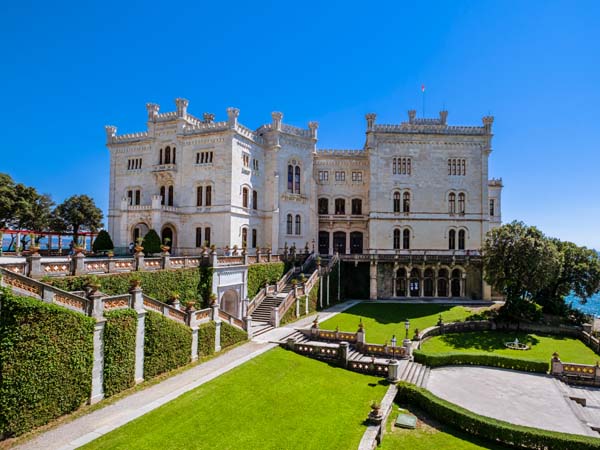
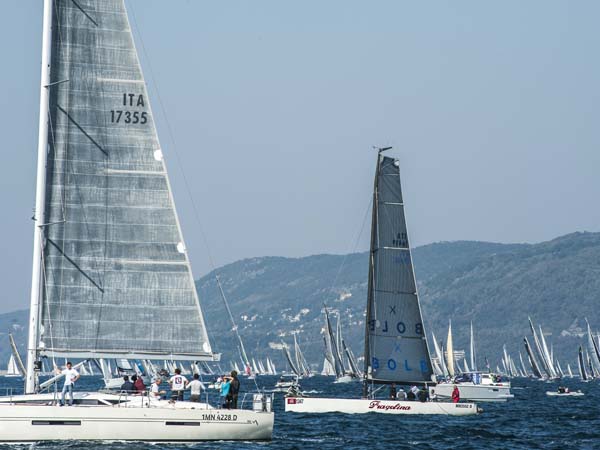
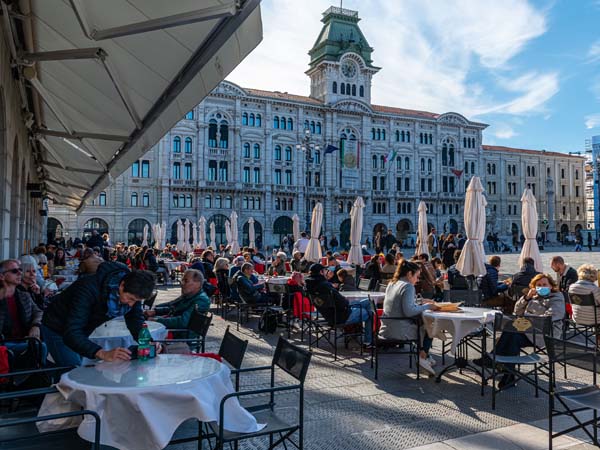
PADUA
Admiring a vast amount of momentous art can make you feel a little lost in sceneries that have endured for thousands of years, but one of Italy’s most significant art cities, Padua, can lead you exactly to the perfect destination as it’s home to the patron saint of the lost, St. Anthony. This city, believed to be the oldest in Northern Italy, was founded in 1183 BC by Trojan prince Antenor. While it’s known as the economic capital of Veneto, Padua is also home to some impressive artistic treasures. In fact, Padua is featured twice on the list of UNESCO World Heritage Sites thanks to its remarkable 14th century frescoes, known as the “Urbs Picta,” and its Botanical Garden. Walk under the sunrise, sunset, or mid-day sky as you explore a wealth of cultural treasures, all lying within the beautiful historic center. From its splendid religious heritage, which includes the Scrovegni Chapel and the Duomo with its baptistery, to the foundation of its ancient university, to the elegant piazze where you can experience a bit of Padova like a true local, this incredible art city will make you wish you could stay longer.
Exploring Padua’s City Center
Padua is blessed with beautiful chapels and churches rich in art and history truly worth admiring, but, before you embark on this extraordinary venture, stroll as the city’s noblemen once did along imposing squares engulfed by elegant medieval architecture. Start at the Piazza dei Signori, one of the most emblematic squares, named after the grand Palazzo della Signoria, or Royal Palace of the Carreresi, who were Lords of Padua from 1318 to 1405. The Clock Tower, the Church of San Clemente, the Palazzo del Capitano, and Loggia del Consiglio also known as Loggia della Gran Guardia, surround the grand square, each recounting its own absorbing tale.
Nearby Piazza delle Erbe and Piazza della Frutta, which date back to the 13th century, are two squares thriving with local life. In the middle of both squares are important frescoes of the ancient court of justice, which form part of the collection of artworks designated as a UNESCO World Heritage Site. In terms of monuments, Palazzo della Ragione is the main historical attraction. From its upper loggia, visitors will enjoys views over Piazza della Frutta and its colorful daily market.
If you’re craving more fresh air, head over to Prato della Valle, which is considered to be Italy’s largest square. Built in a Patrician style, common of the Venetian tradition, the square has an elliptical shape with a center island surrounded by a canal adorned with 78 statues of illustrious personalities such as the great Galileo, the poet Petrarch, and painter Andrea Mantegna.
Five minutes west of Prato della Valle is the Botanical Garden, the oldest in the world. It was founded in 1545 as a center for scientific research part of the University of Padua’s department of medicine, a purpose it still very much maintains today housing a substantial collection of exotic plants.
The University of Padua
Speaking of the University, whether you are a science geek or not, you will want to tour Palazzo Bo, the University of Padua’s main seat. As Italy’s second oldest university, and one of the most prestigious, the University of Padua paved the way for figures whose discoveries during the 16th and 17th centuries transformed the cultural and scientific history of humanity. Among the most prominent names are Copernicus and Galileo Galilei, who both studied the skies from within the university’s grounds.
The Belgian anatomist and physician Andrea Vesalius, founder of modern anatomy, spent six years during the 1530s teaching at the University of Padua. A guided tour will take visitors to see the Anatomical Theatre, where Vesalius studied the human body by dissection, as well as Galileo’s Aula Magna with the podium used during his lessons, the Sala dei Quaranta or “Hall of the Forty”, and the Aula di Medicina where lectures on medicine were first given.
Religious Sites
Padua is closely tied to religious tourism due in part to its renowned international pilgrimage site, the Basilica of Sant’Antonio di Padova. This seven-domed basilica was built in honor of St. Anthony, whom locals take pride in as Padua is his resting place. The basilica was built between 1230 and the following century utilizing different architectural styles: Romanesque, Gothic, Byzantine, Renaissance, and Baroque. The saint’s remains are kept in a Baroque style chapel richly decorated in marble with other reliquaries, chalices, ex voto objects, and precious items. Be sure to dedicate plenty of time to exploring the Basilica and its priceless artworks.
Outside the Basilica, in Piazza del Santo, don’t miss the impressive statue of General Erasmo da Narni better known as “Gattamelata”, one of the early Renaissance works by Donatello.
Stunning Frescoes
Padua’s 14th Century Frescoes, which have been a UNESCO World Heritage Site since July 2021, are of remarkable artistic value. Located in eight different areas spread throughout the historic city center, overall, the frescoes have cemented Padua’s unique role in the development of Italy’s artistic heritage.
The most renowned of Padua’s frescoes are Giotto’s cycles located in the Scrovegni Chapel. However, other notable artists contributed as well including Jacopo da Verona, Giusto de’ Menabuoi, Guariento di Arpo, Altichiero da Zevio, and Jacopo Avanzi. These artists were hired by local noble families, such as the Carraresi family, to create unprecedented fresco cycles that completely revitalized the city’s artistic life. The remarkable frescoes can be admired in palaces, such as Palazzo della Ragione and Carraresi Palace, as well as the Basilica of San Antonio and the Church of San Michele.
Despite being painted by a range of artists in diverse locations, a consistent sense of style and content can be admired across all of the fresco cycles. In particular, the frescoes are renowned for their portrayal of spatial perspectives as well as detailed human figures with rich emotions. Thanks to scientific advancements during this period, the artists where able to experiment with realistic perspective and convincing trompe-l’oeil effects. Likewise, an emphasis on humanism resulted in the wide range of human emotions featured in the frescoes as well as the practice of including the fresco’s patron in the work. Ultimately, Padua’s frescoes represent a unique intersection between scared art and the secular power of the city’s noble families.
Padua is a city emblematic of Italy, where traditional artistic heritage and noble palaces coexist with modern innovations. Padua is home to a diverse range of businesses, while the historical core and artistic and architectural treasures speak of traditions and history that are still very much alive today. A visit to Padua allows travelers to follow in the footsteps of St. Anthony and immerse in the city’s vast artistic treasures — two opportunities that should not be missed!
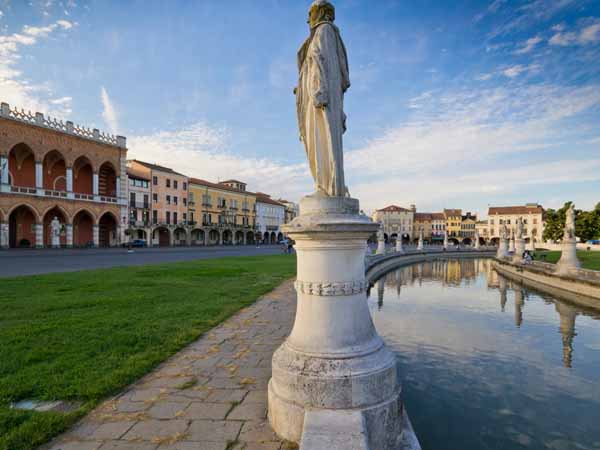
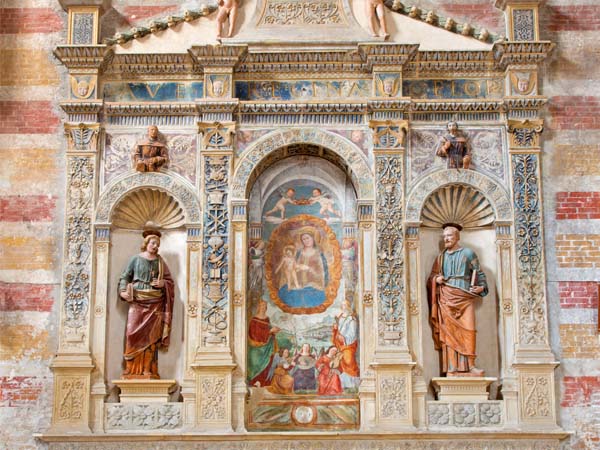
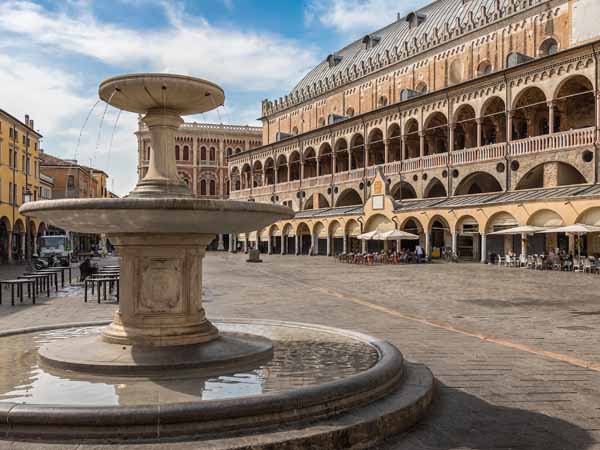
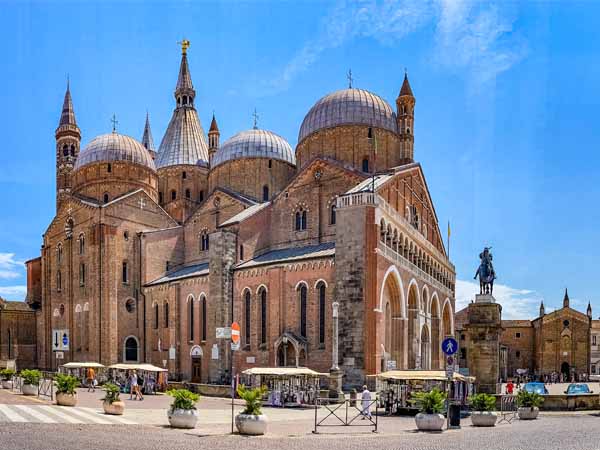
REGGIO CALABRIA
Positioned at the toe of Italy’s boot-shaped peninsula, along the Strait of Messina, Reggio Calabria is Italy’s furthest south city on the mainland. Surrounded by the astounding deep blue colors of the Tyrrhenian Sea, most tourists pass it by as they make their way to Sicily through the strait, yet, this impressive city has much more to offer than just beautiful coastal sceneries. With a city center mainly rebuilt in the Eclectic and Liberty styles after a massive earthquake in 1908 left the city in ruins, one might not think Reggio Calabria has a rich and ancient history that can be traced to a least 4,000 years ago. Considered one of Italy’s top southern art cities, the possibilities to delve into art, history, and culture are beyond anyone could imagine.
Greek Origins
Reggio Calabria was founded in 720 BC by Greek colonists who named it Rhegion, for what was to be a daughter city to Zankle, today known as Messina. In 89 BC, the city became a Roman municipality, and while it flourished under the Romans, it retained its Greek traditions and language. To this day, a Greek-Calabrian dialect known as Greko is still spoken by many residents.
Over the centuries, the Moors, Byzantines, Swabians, and Bourbons would rule over the city, each contributing to its prosperous historical and artistic legacy. Yet, much of Reggio Calabria’s original Greek appeal remains intact. Historic evidence from the thriving days of Magna Graecia can be appreciated from the ancient city walls to priceless artifacts on display at the National Archaeological Museum of Reggio Calabria, one of the country’s most prestigious exhibits.
The Riace Bronzes
The Archaeological Museum is also home to the mythical pair of bronze statues known as the Bronzes of Riace. The two sculptures were discovered at the bottom of the Ionian Sea in 1972 and are believed to date back to the 5th century BC. Close to 6.6 feet tall and weighing around 350 pounds, the two nude male statues display impressive and highly realistic anatomical details from veins to hair, facial features, and even teeth. The bronzes have become an icon of the city that the locals are highly proud of.
Other Historic Monuments
If the Bronzes of Riace have sparked your curiosity about Reggio Calabria’s ancient past, you can continue on an enlightening tour visiting the Roman Baths and the Archaeological Park of Locri Epizefiri, where 4,000-year-old remains of both the Greek and Roman cities are open to the public. Remnants of buildings once housing theaters, temples, and private residences are sure to astound you. Back at the historical city center, 20 feet beneath the ground at the Hypogeum of Piazza Italia, explore the archaeological traces through six different layers of excavations where vestiges of life from the Hellenistic Greek period up to the early 19th century can be admired.
Built to last for centuries, stands one of the city’s most emblematic monuments, the Aragonese Castle. Untouched by the earthquake of 1908 that destroyed most of Reggio Calabria, this medieval castle dates back to the Byzantine period and has served as a defensive fortress through all the Byzantine, Swabian, Angevin, and Spanish Aragonese dominions. Today, it’s used as an exhibition space for cultural functions and it’s a must on any itinerary to Reggio Calabria.
Like every Italian city, Reggio Calabria has a number of lively squares, noble palaces, and beautiful churches. At Piazza Duomo, be sure to visit the imposing Cathedral of St. Mary of the Assumption built in a mix of Romanesque and Gothic styles. The first cathedral was erected in the 11th century; however, over the centuries it was damaged and rebuilt more than once as it was unable to survive two wars and two earthquakes. The current building was constructed after the Messina earthquake of 1908.
For stunning sea views across the Strait of Messina, be sure to take a leisurely stroll down the city’s waterfront promenade. On clear days, visitors who glance across the strait will be graced with views of Sicily’s Mt. Etna.
With ancient ruins, remarkable museums, a vibrant artistic and cultural scene, and excellent beaches for relaxing among the locals, Reggio Calabria is the perfect seaside art city.
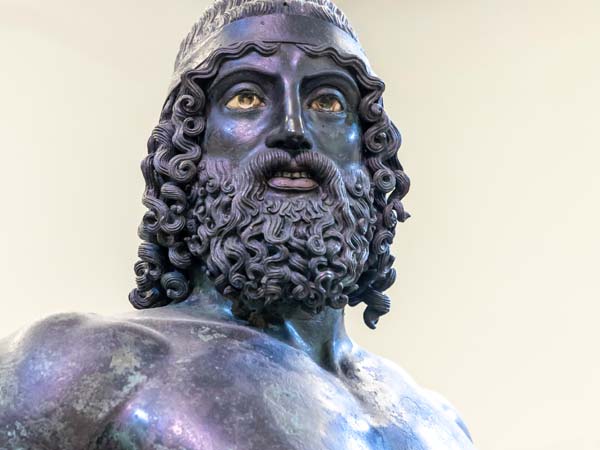
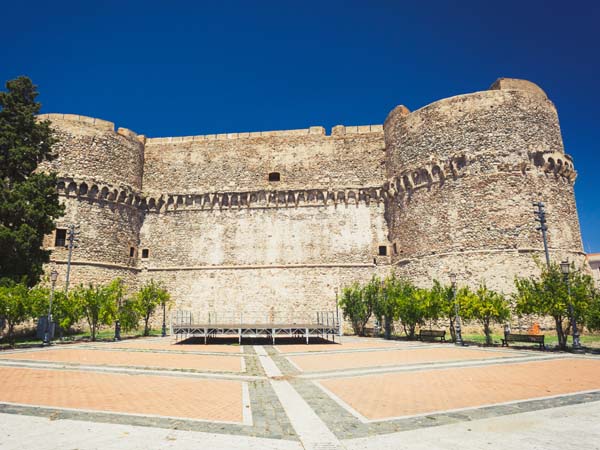
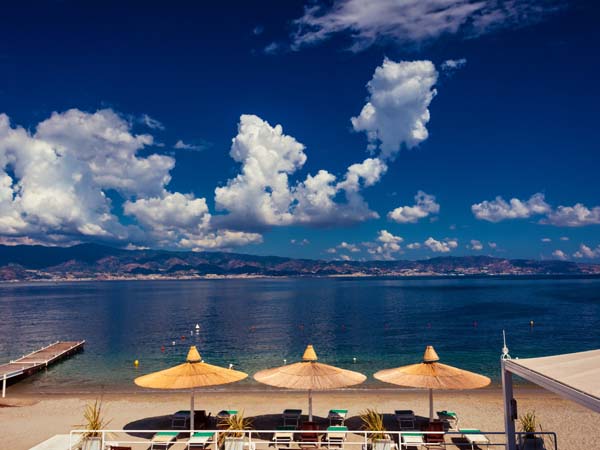
Of course, getting lost in some of Italy’s serious history doesn’t mean that you can’t enjoy other legendary sites or leisurely activities all during the same trip. From guided city tours and skip-the-line museum entrances to winery visits and tastings or even hands-on cooking classes, Trips 2 Italy can design the ideal itinerary so you can fully immerse in the country’s rich culture and traditions. If you are interested in any of these historic sites but can’t decide which area of Italy to visit first, contact your Trips 2 Italy travel specialist to customize your perfect travel package.
